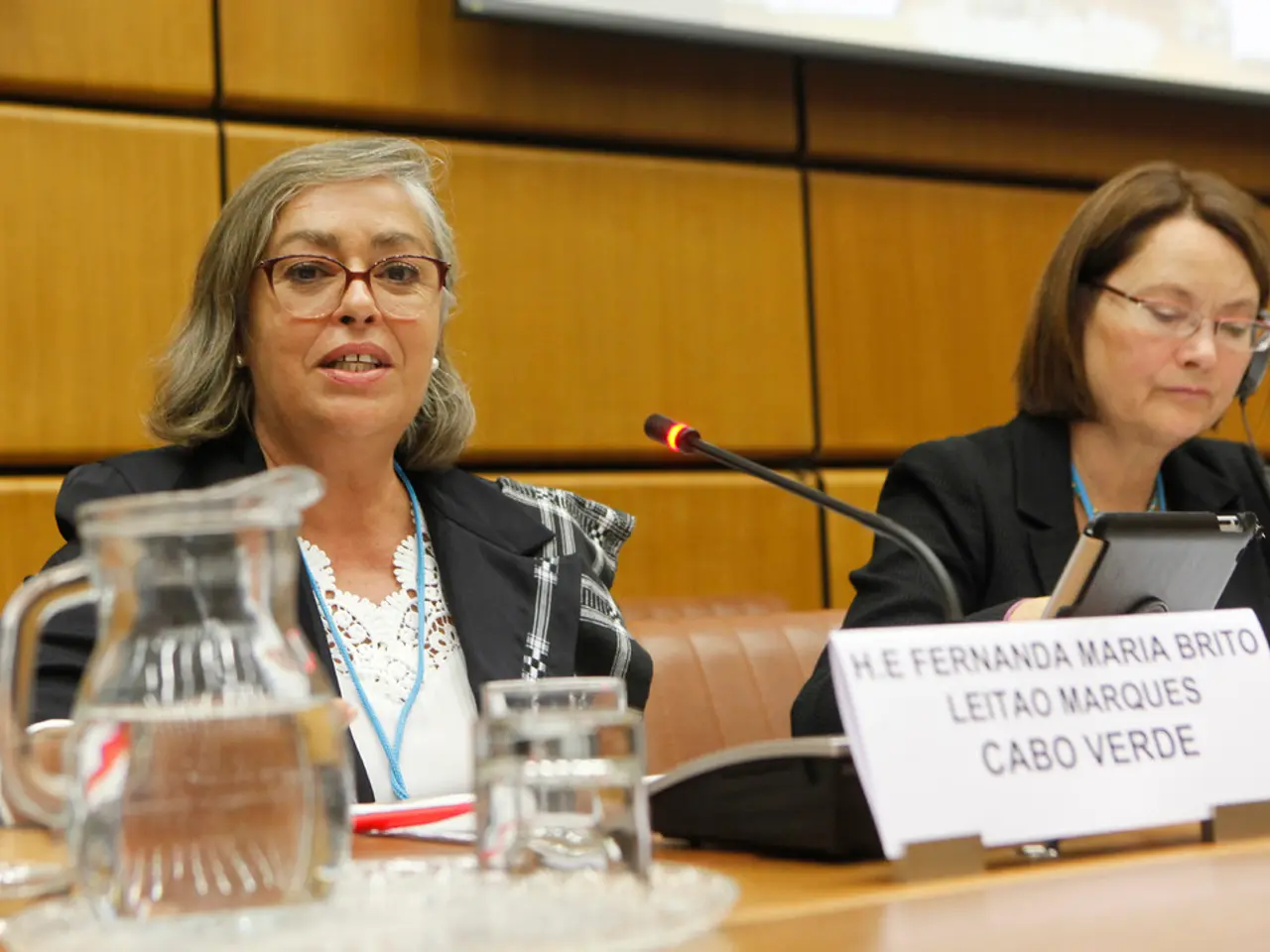Embracing Blockchain for Humanitarian Aid
A Global Shift Underneath the Trump Administration's Watch
Trump Administration Intends to Reorganize USAID, Highlighting Blockchain Technology and Strategic Priorities
The Trump administration recently has unleashed a massive plan to transform the U.S. Agency for International Development (USAID), marking a major overhaul in the U.S. foreign aid policy, a change decades in the making.
One of the key modifications entails the potential utilization of blockchain technology within the scope of aid delivery.
Reworking USAID's Framework: A Look Ahead
The restructuring initiative, part of a broader federal plan, seeks to shrink the agency's scope while eliciting a closer alignment with U.S. strategic objectives and ground-breaking technologies.
Documents obtained by Politico reveal that the administration contemplates renaming the agency the "U.S. Agency for International Humanitarian Assistance" (IHA) and assigning it directly under the purview of the Secretary of State. This structural shift would significantly erode USAID's autonomy, placing the State Department in charge of oversight.
The revamp follows ongoing upheaval at USAID, initiated by the Department of Government Efficiency (DOGE), an endeavor spearheaded in part by tech entrepreneur Elon Musk. The DOGE drive has already instigated extensive cuts across various government agencies, resulting in thousands of job losses and the cancellation of numerous foreign aid contracts.
Under the new strategic direction, USAID will focus primarily on four core regions: global health, food security, disaster response, and countering the influence of adversarial powers, notably China.
The strategy represents the Trump administration's efforts to stay competitive with China's formidable "Belt and Road" initiative, which seeks to extend Beijing's economic and diplomatic influence into countries where the U.S. also seeks alliances.
First established in 1961 by President John F. Kennedy during the Cold War, USAID has long served as a means to project American soft power, standing strong amid political struggles and the downfall of the Soviet Union.
Blockchain: A Revolutionary Leap for Aid Distribution
The strategic plan also outlines plans to embed blockchain into IHA's procurement and disbursement systems, providing a tamper-proof, transparent record of aid flows.
"All distributions would be secured and traced via blockchain technology, aiming to significantly boost security, transparency, and traceability," the document states.
Though the specifics have yet to be disclosed—including the potential use of digital currencies like stablecoins—the goal is to slash administrative costs, combat corruption, and facilitate real-time verification of fund transfers. However, the proposal concedes the technical challenges of implementing blockchain in remote or developing regions, such as the need for digital infrastructure, data privacy protocols, and staff training.
The application of blockchain in humanitarian aid is not without precedent. Organizations like the United Nations High Commissioner for Refugees (UNHCR) and Kenya Red Cross have experimented with the technology, yielding mixed results. advocates contend that blockchain technology has the capacity to modernize aid delivery, yet it may pose technical challenges for smaller NGOs and local partners.
Let's delve deeper into the intriguing world of blockchain and its potential to alter the landscape of humanitarian aid. The technology, based on a distributed, decentralized database, provides a secure, transparent means of recording and verifying transactions. Its power stems from its ability to protect against tampering and ensure the authenticity of transactions, making it an attractive solution for sectors like finance, supply chain management, and, more recently, humanitarian aid.
While blockchain technology can help combat corruption and increase transparency in aid distribution, it comes with its own set of challenges. Technical expertise is required to implement and maintain the technology, which may pose a burden for smaller NGOs and local partners that may lack the necessary resources. Additionally, concerns about privacy and data security must be addressed, as the storage and transmission of sensitive information can expose individuals to potential risks.
In the grand scheme of things, the integration of blockchain technology into foreign aid programs could result in significant improvements in efficiency and accountability. The technology could help streamline the aid distribution process, reduce administrative costs, and enable real-time tracking of donations, ultimately ensuring that aid reaches those in need.
One key question remains: Will the Trump administration manage to drive the change needed to successfully implement blockchain in its foreign aid programs? Only time will tell.
Stay tuned as we continue to unravel the mysteries of the financial world, bringing you the insights and knowledge you need to navigate the rapidly changing landscape of capital and investing.
Elon Musk's X Platform Upgrades Recommendation Algorithm with GrokBinance Launchpool Introduces Space and Time with ZK TechnologyElon Musk Proposes AI for Government EfficiencyOpenAI Expands $500B Stargate Project to U.S. ShoresSKYAI Launches Demo for AI-Blockchain IntegrationUnichain Launches TEE-Based Block Construction on Layer 2Tether Expands into Telecom and Biotech Under CEO ArdoinoBlackRock Files for Blockchain Share Class with SEC
With a passion for decoding the complexities of the financial world, I've spent over four years in financial journalism, covering everything from traditional equities to the bleeding edge of venture capital. "The financial markets are a fascinating puzzle," I often say, "and I love helping people make sense of them." That's what drives me to bring clear and insightful financial journalism to the readers of Coincu.
- The Trump administration's plan to restructure USAID includes the potential use of blockchain technology for aid delivery, aiming to boost security, transparency, and traceability.
- Under the revamped USAID framework, the agency may integrate blockchain into its procurement and disbursement systems, reducing administrative costs, combating corruption, and facilitating real-time verification of fund transfers.
- The integration of blockchain technology into foreign aid programs could lead to significant improvements in efficiency and accountability, streamlining the aid distribution process and enabling real-time tracking of donations.
- The application of blockchain in humanitarian aid is not new, with organizations like the UNHCR and Kenya Red Cross experimenting with the technology, yielding mixed results.
- The success of implementing blockchain in USAID's foreign aid programs will depend on various factors, such as the development of digital infrastructure, data privacy protocols, and staff training in remote or developing regions.








